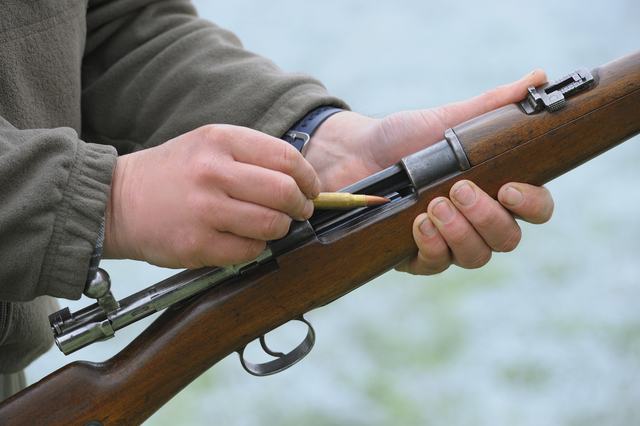Hunter education coordinator was all about safety
As the curtain went up on the 2017 edition of the SHOT (Shooting, Hunting and Outdoor Trade) Show at the Sands Expo Center on Tuesday, I received word that a friend of mine had died. Given that he was an ardent shooting sports enthusiast, and that some 65,000 industry professionals were in Las Vegas to discuss hunting and shooting, I couldn’t help but think that perhaps my friend’s timing was right.
My friend and his family are quiet, unassuming folks, so out of respect for them, I’ll keep his name to myself. Going forward, let’s call my friend George.
George was one of those guys who seems to know the history and ballistic charts for just about every firearm ever invented, not to mention the cartridge offerings – factory and wildcat rounds – for all of them. But George was more than a walking firearm encyclopedia, he was a teacher and sharer of knowledge.
I first met George in 1993, shortly after starting my new job as the Hunter Education coordinator with the Nevada Department of Wildlife in Las Vegas. George and his son were new volunteer instructors for that program, and we went through the new instructor training regimen together. George and his son hit the ground running, and soon put together a teaching team that through the years taught many of you or members of your family.
George taught 69 classes as a Hunter Education instructor, sharing his knowledge of firearms and hunter safety with almost 1,300 students. Had the effects of age not caught up with him, I have no doubt George would have taught many more. As a volunteer, George’s motivation wasn’t financial. He was all about breaking trail for the generations of hunters and shooters that followed in his footsteps.
When George became a volunteer instructor, some of our teaching aids were quite rudimentary. For teaching the principles of gun safety, for example, we used replicas of firearms that had been cut from 1-inch by 6-inch fence posts. We used the mock firearms instead of real ones to prevent the chance of an accidental discharge should a student happen to bring a cartridge to class. To imitate the sound of an action being opened or closed, we had the students say “chuck!”
Though the mock firearms did the job, George thought our students were being shortchanged. Then one day, he and his son walked into my office with a new and improved version that included working bolt- and pump-action models. It was obvious the two had spent considerable hours designing, testing and manufacturing the training firearms, which were made from common PVC sprinkler pipe and lumber. All on their own time and dime.
Though the new teaching aids were soon being used in all Las Vegas area Hunter Education classes, George was not content. He wanted to make them better. Eventually, he added a red laser and a working trigger. Anytime a student put his finger on the trigger – a common safety error for adults and youth alike — the teacher knew it immediately and could take advantage of the teaching moment to correct that mistake. Soon, the new training firearms were put in use statewide. Any guesses as to who manufactured them?
Eventually, the training firearm concept was recognized by the International Hunter Education Association and picked up by a major air rifle manufacturer that produced them by the thousands. Soon they were being used in Hunter Education classes across the country, but the industry didn’t stop there.
In 2010, the folks at Remington and Mossberg coordinated with the IHEA and began producing training firearms that are the real deal with the firing mechanism disabled so they can’t be used to fire a live round. Hunter Education students can now experience the touch, feel and function of five action types — bolt, lever, slide, break and semi-automatic — during safe gun-handling exercises.
Is there a direct link between these modern teaching firearms and George?
I like to think so, and I can’t teach a Hunter Education class without thinking about him. His desire to improve the program in Nevada changed things nationwide.
George was more than a Hunter Education instructor. He was my friend.
Freelance writer Doug Nielsen is a conservation educator for the Nevada Department of Wildlife. His “In the Outdoors” column, published Thursday in the Las Vegas Review-Journal, is not affiliated with or endorsed by the NDOW. Any opinions he states in his column are his own. He can be reached at intheoutdoorslv@gmail.com.
CALENDAR
The tag application period for Nevada's 2017 spring wild turkey limited entry hunt opened Tuesday. Applications must be submitted at huntnevada.com by 11 p.m. Feb. 7. Applications for open quota hunts in Lyon County and Paradise Valley of Humboldt County can be obtained from participating landowners but must be submitted via the mail.







